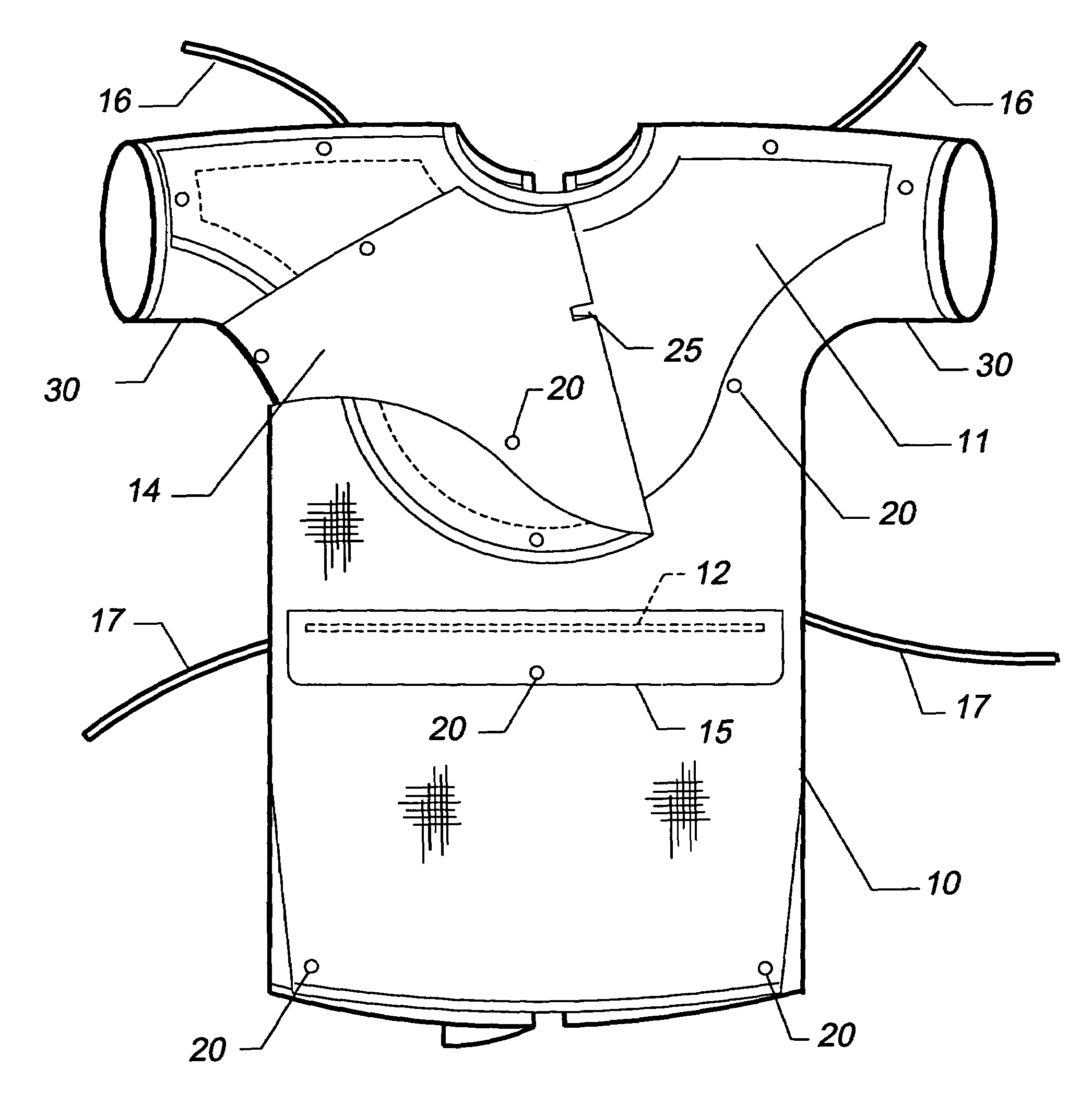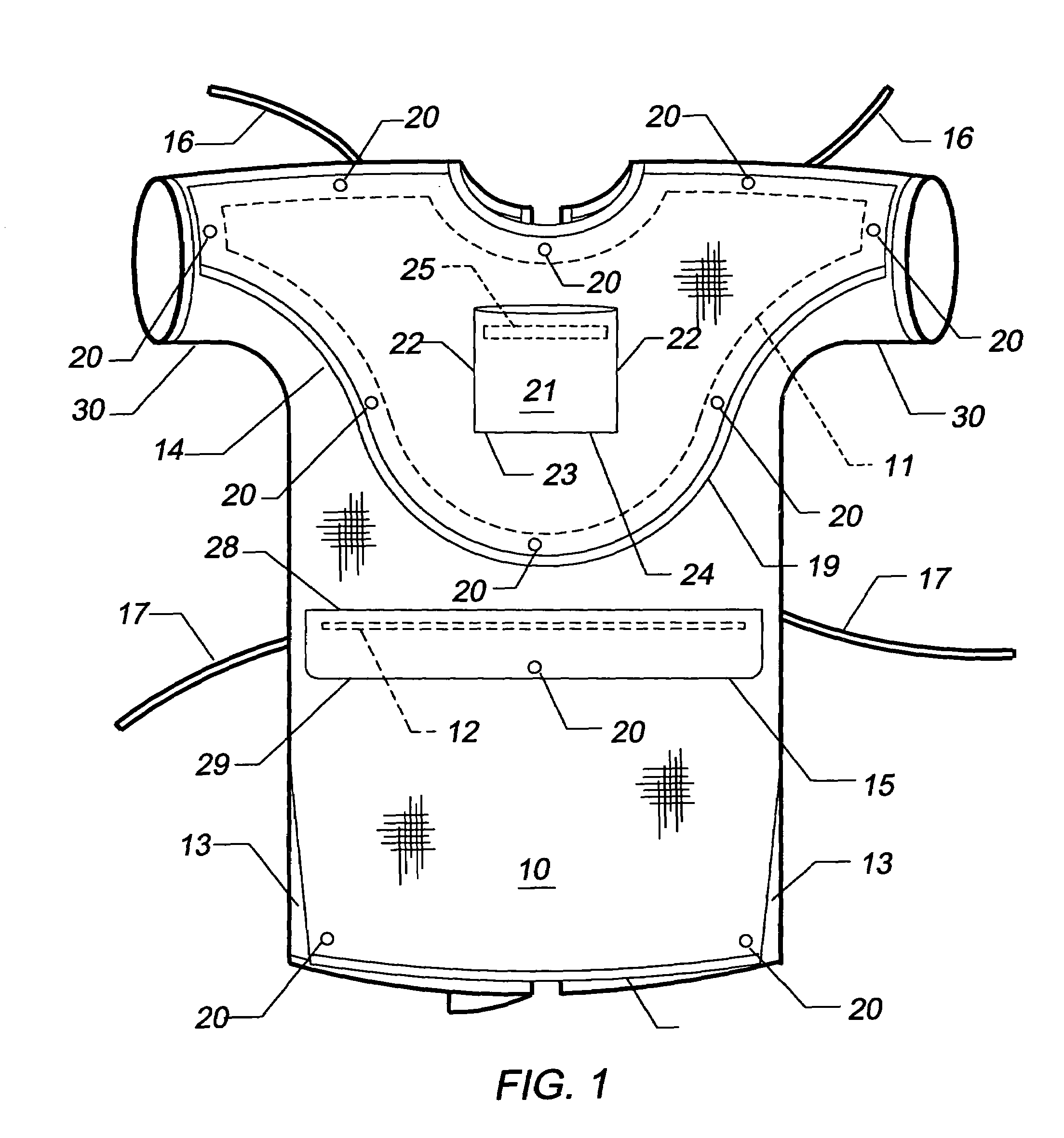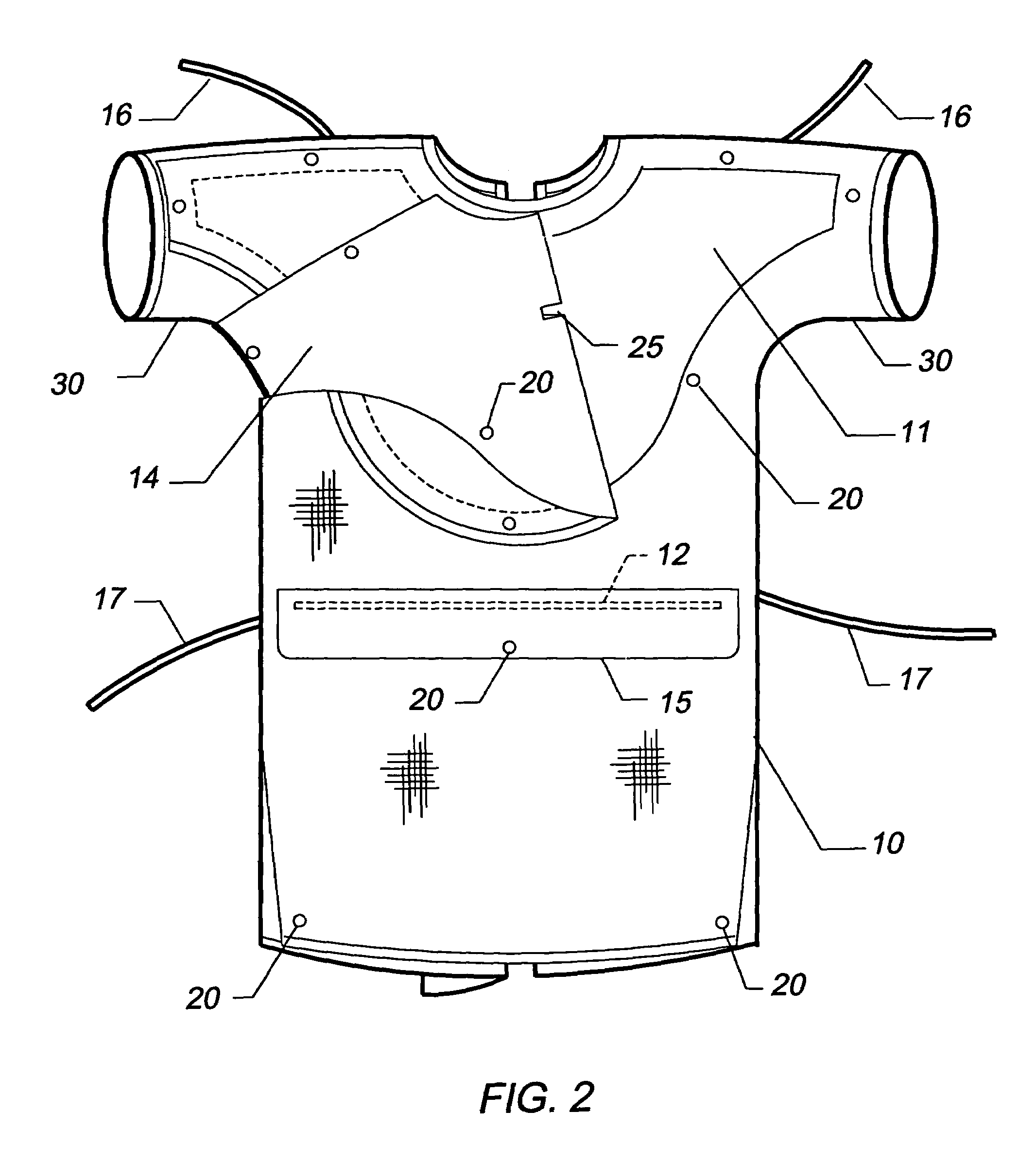Hospital gown
- Summary
- Abstract
- Description
- Claims
- Application Information
AI Technical Summary
Benefits of technology
Problems solved by technology
Method used
Image
Examples
Embodiment Construction
[0017]Referring now to the drawings wherein like numerals designate like and corresponding parts, in FIGS. 1 and 3, a hospital gown 10 is shown for preserving a patient's modesty while uncovering selected body areas for examinations and medical treatments. The hospital gown 10 is a short sleeve three-quarter length garment, with two openings 11, 12 on the front of the gown 10, a pair of divided lower portions 13, a pair of panels 14, 15 for closing the openings 11, 12, quick release fasteners 20 for attaching the panels 14, 15 to the gown 10, and ties 16, 17 to retain the gown 10 on the patient.
[0018]The gown 10 is reusable and made of thin sheets of fabric, such as cotton, rayon and polyester but may also be made of disposable fibrous or plastic materials. The borders of the gown 10 are preferably reinforced with hems 18. On the upper portion of the gown 10 is a large opening 11 with an arcuate lower margin 19. The opening 11 extends laterally for almost the entire width of the gow...
PUM
 Login to View More
Login to View More Abstract
Description
Claims
Application Information
 Login to View More
Login to View More - R&D
- Intellectual Property
- Life Sciences
- Materials
- Tech Scout
- Unparalleled Data Quality
- Higher Quality Content
- 60% Fewer Hallucinations
Browse by: Latest US Patents, China's latest patents, Technical Efficacy Thesaurus, Application Domain, Technology Topic, Popular Technical Reports.
© 2025 PatSnap. All rights reserved.Legal|Privacy policy|Modern Slavery Act Transparency Statement|Sitemap|About US| Contact US: help@patsnap.com



